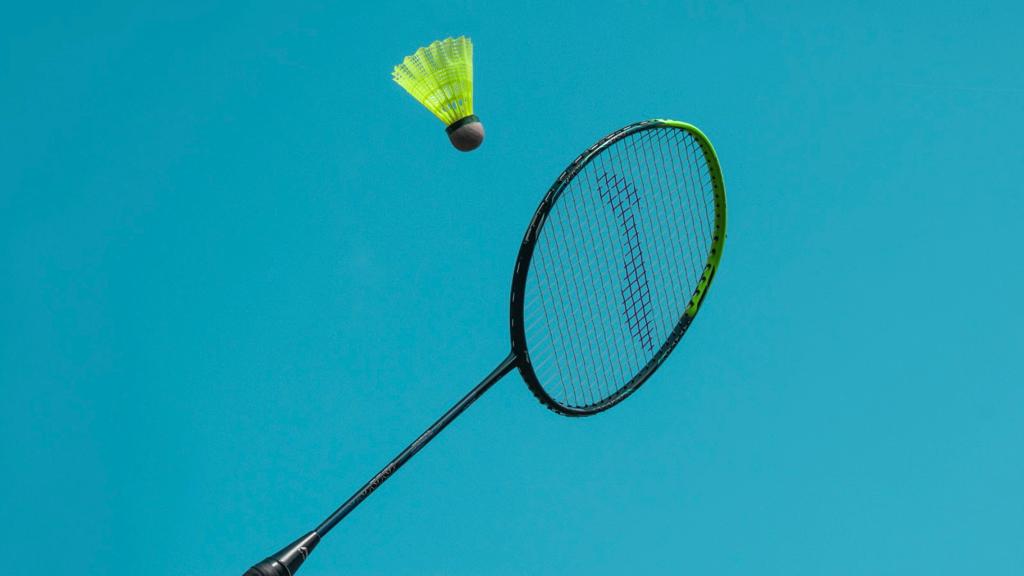
How to Choose the Perfect Badminton Racket: 10 Tips to Keep in Mind
Badminton is an exciting and fast-paced sport that requires skill, precision, and the right equipment. A badminton racket is one of the most important pieces of equipment a player needs. With so many different types and brands of rackets available on the market, it can be overwhelming to choose the right one for your needs. In this article, we will provide you with 10 tips on how to choose the perfect badminton racket.

Consider the Weight of the Racket
The weight of the racket is a critical factor to consider when choosing a badminton racket. A heavy racket can offer more power in your shots, but it may cause fatigue and strain on your wrist over extended play. A lighter racket can offer more control, speed, and maneuverability, but it may not provide as much power. Beginners may want to consider a lighter racket to improve their skills and prevent injuries.
When choosing a racket, make sure to try out different weights and determine which feels comfortable for you. The standard weight for a badminton racket is between 85-92 grams, but there are lighter and heavier options available.
Consider the Balance of the Racket
The balance of a racket is another crucial factor to consider. It refers to the distribution of weight in the racket, which can be head-heavy, even-balance, or head-light. A head-heavy racket provides more power in your shots, but it can cause strain on your wrist and arm. An even-balance racket provides a combination of power and control. A head-light racket provides more control and maneuverability, but it may not provide as much power.
When selecting a racket, consider your playing style and skill level. Beginners may prefer an even-balance or head-light racket for improved control, while advanced players may prefer a head-heavy racket for more power.
Consider the Grip Size of the Racket
The grip size of a racket is another important factor to consider. A grip that is too small or too large can cause discomfort and affect your gameplay. The standard grip size for a badminton racket is between G4 and G5. G4 is suitable for players with smaller hands, while G5 is suitable for players with larger hands.
To determine your grip size, measure the distance between the tip of your ring finger and the second crease of your palm. Consult a sizing chart to determine which grip size is appropriate for your hand size.
Consider the Frame Shape of the Racket
The shape of a badminton racket’s frame can also affect its performance. The two most common frame shapes are isometric and oval. An isometric racket has a larger sweet spot, providing more power and control. An oval racket has a smaller sweet spot, but it provides more accuracy and maneuverability.
When selecting a racket, consider your playing style and skill level. Advanced players may prefer an isometric racket for more power, while beginners may prefer an oval racket for improved accuracy.
Consider the String Tension of the Racket
The string tension of a racket can also affect its performance. Higher string tension provides more control and accuracy, but it may reduce power and cause more strain on the arm. Lower string tension provides more power and less strain on the arm, but it may reduce control and accuracy.
When choosing a racket, consider your playing style and skill level. Advanced players may prefer higher string tension for more control and accuracy, while beginners may prefer lower string tension for more power.
Consider the Material of the Racket
Badminton rackets are made from different materials, including aluminum, steel, graphite, and carbon fiber. Each material has its own advantages and disadvantages. Aluminum and steel rackets are more affordable, but they are also heavier and less durable. They may also provide less power and control in your shots.
Graphite and carbon fiber rackets are lighter and more durable than aluminum and steel rackets. They also offer more power and control in your shots. However, they are also more expensive.
Consider your budget and playing style when selecting a racket. Advanced players may prefer a graphite or carbon fiber racket for their performance advantages, while beginners may prefer an aluminum or steel racket for their affordability.
Consider the Brand and Model of the Racket
There are many different brands and models of badminton rackets available on the market. Each brand and model has its own unique features, advantages, and disadvantages.
Research the different brands and models of rackets available and read reviews from other players to determine which ones may be suitable for your needs. You may also want to consult with a coach or experienced player for recommendations.
Try Before You Buy
It is essential to try out a racket before purchasing it. This will give you a better understanding of how the racket feels in your hand and how it performs on the court.
Try out different rackets with different weights, balances, grip sizes, and frame shapes to determine which one feels most comfortable and suitable for your needs. You may also want to test the racket with different string tensions to see how it affects performance.
Consider the Price
Badminton rackets can vary greatly in price. A basic aluminum or steel racket may cost under $20, while a high-end graphite or carbon fiber racket can cost over $200.
Consider your budget when selecting a racket. You do not need to purchase the most expensive racket to play well. However, investing in a high-quality racket that suits your playing style and skill level can improve your performance and prevent injuries.
Take Care of Your Racket
Once you have chosen your badminton racket, it is essential to take good care of it. Keep it in a protective case, clean it regularly, and replace the strings as needed. Proper care and maintenance can extend the life of your racket and ensure it performs at its best.
Conclusion
Choosing the right badminton racket can greatly improve your performance and enjoyment of the sport. Consider the weight, balance, grip size, frame shape, string tension, material, brand and model, and price when selecting a racket. Remember to try before you buy and take good care of your racket. With these tips, you can choose the perfect badminton racket for your needs and take your game to the next level.












